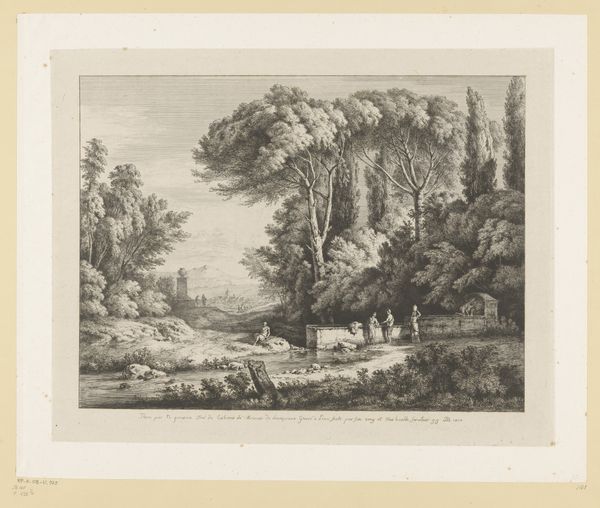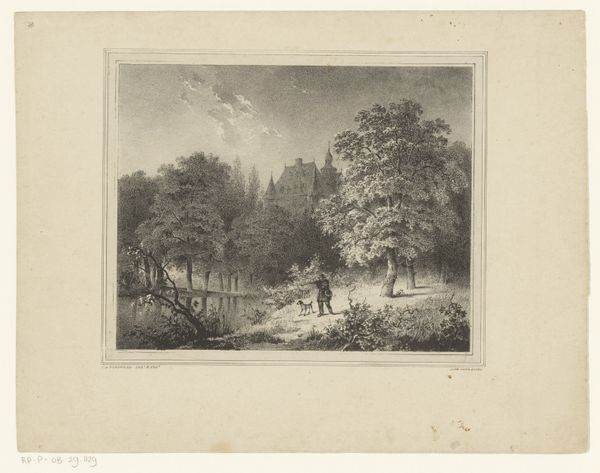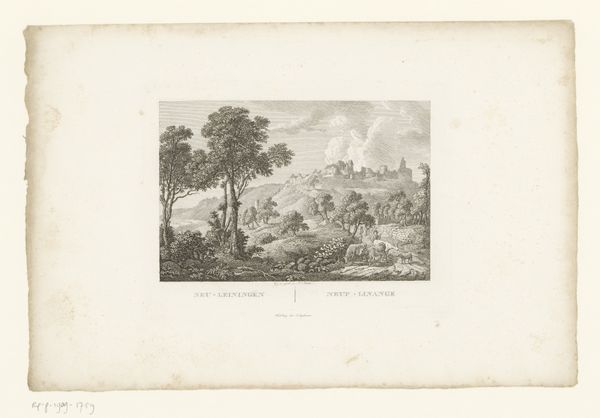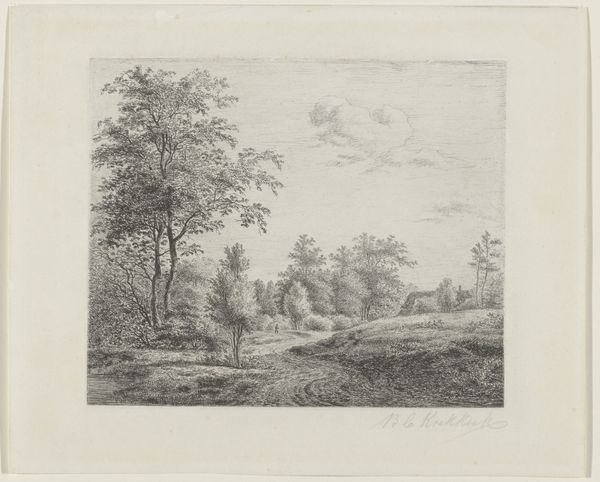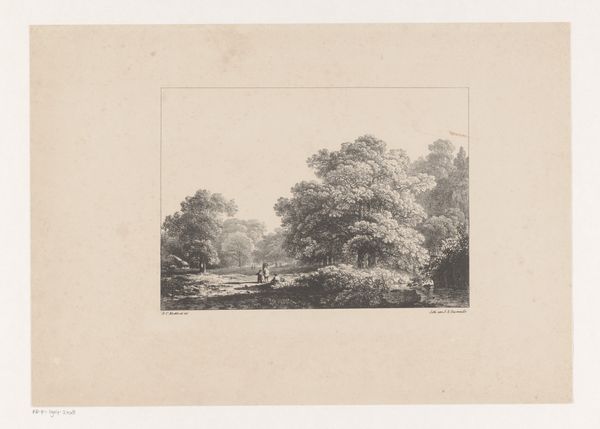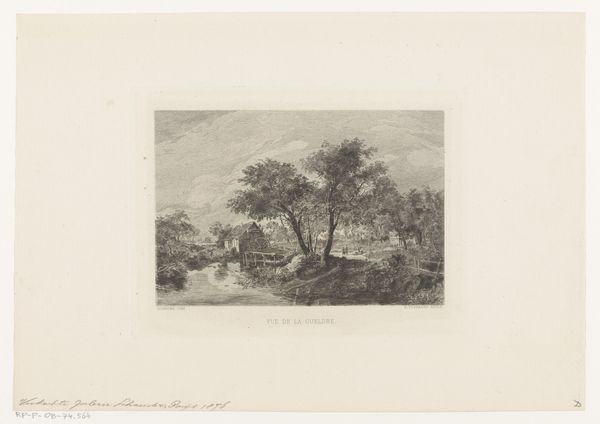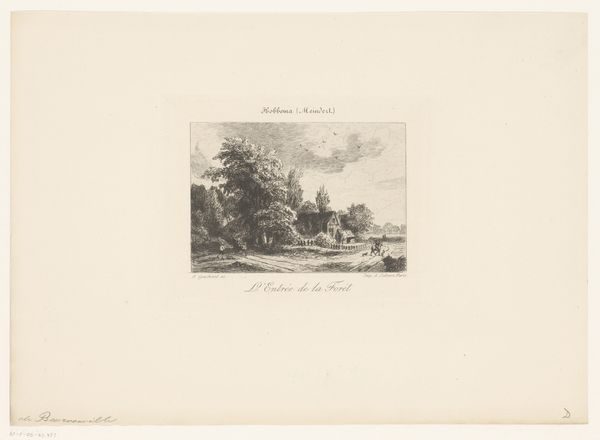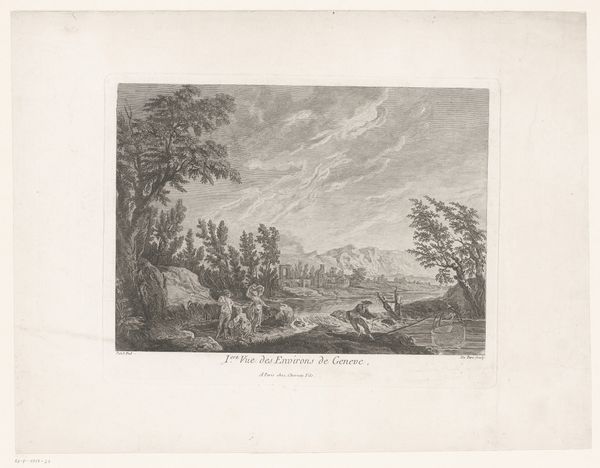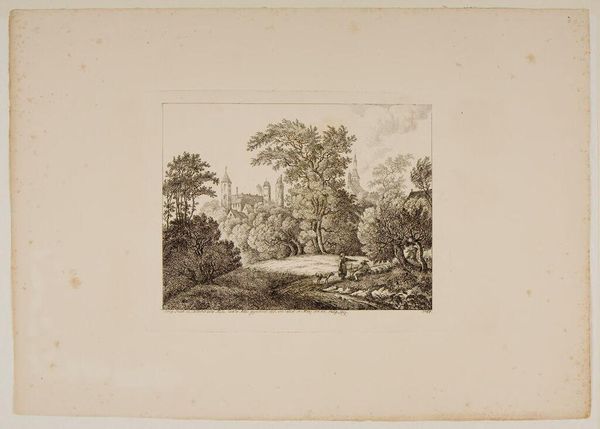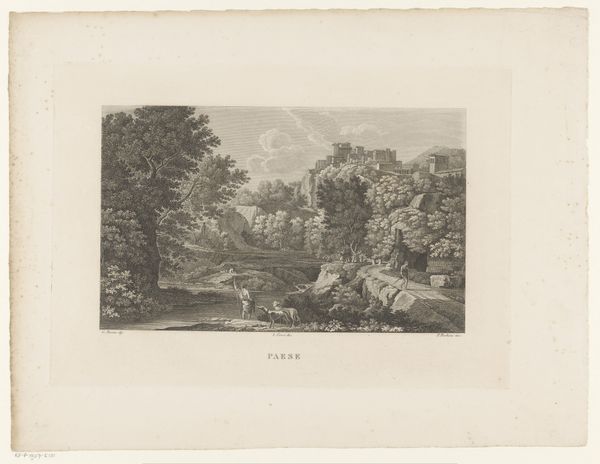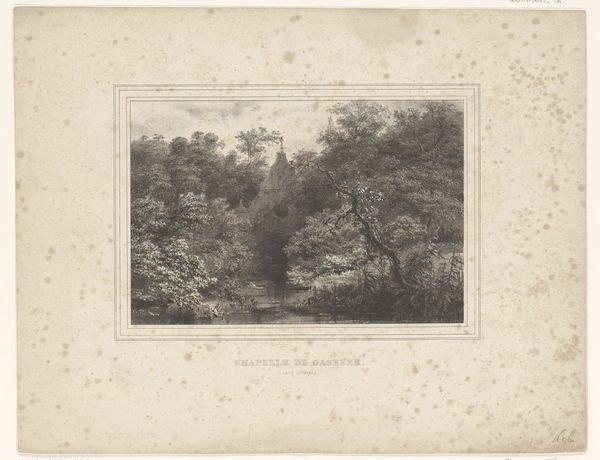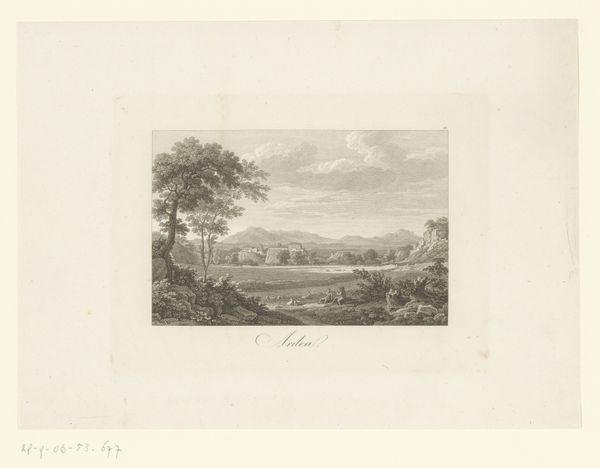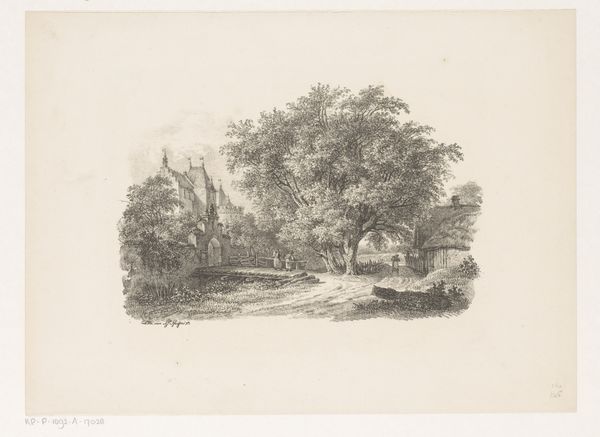
print, engraving
# print
#
landscape
#
perspective
#
form
#
romanticism
#
line
#
cityscape
#
history-painting
#
engraving
Dimensions: height 273 mm, width 356 mm
Copyright: Rijks Museum: Open Domain
Curator: This print, entitled "Gezicht op Cimetière du Père-Lachaise," attributed to Jean Baptiste van Marcke, gives us a glimpse into the famed Parisian cemetery sometime between 1808 and 1849. The technique used here is engraving, placing it firmly within a tradition of reproducible landscape imagery. Editor: Ah, it’s funny. A graveyard. But so airy! The first impression is light, almost pastoral. It's like a garden…a very serious garden party happening beyond the gate there. You almost forget it’s full of dead people, until you realize you don’t know them. Curator: That juxtaposition, the sense of a landscape almost reclaiming a site of death, resonates with the Romantic era’s complex relationship with mortality. It speaks to nature's indifferent power, rendering human endeavors, even burial, temporal and, frankly, powerless. This also touches on the emerging bourgeoisie, claiming their space, even in death, as burial sites were increasingly connected to class and social identity. Editor: Powerless? Maybe, maybe not. There’s defiance there too. Look at how they designed their final address, almost as an artwork. The clean lines versus the tangled growth. They’re having a conversation, don’t you think? It whispers "I am here still!". The symmetry fighting against the wilderness. The print wants to show how nature takes back its place…yet can it? Or rather: can nature overcome people's need to make an ordered, designed place? Curator: I see your point. This isn't merely a representation of nature's victory over death, but rather a depiction of humanity negotiating, and arguably dominating, the narrative surrounding it, especially since, historically, Pére-Lachaise emerged from garden design principles that sought to aesthetically improve the funerary space. What we observe here is less nature than human agency as mediated by class. Editor: Exactly, in design. The light is like that—light is coming both from nature AND man’s design, right? We meet where the light shines the most! Well, Jean Baptiste sure had me look deep. I never saw this artwork as some death celebration…maybe that it means life itself…or design—both. Curator: Indeed, a very stimulating insight. It reveals so much.
Comments
No comments
Be the first to comment and join the conversation on the ultimate creative platform.
